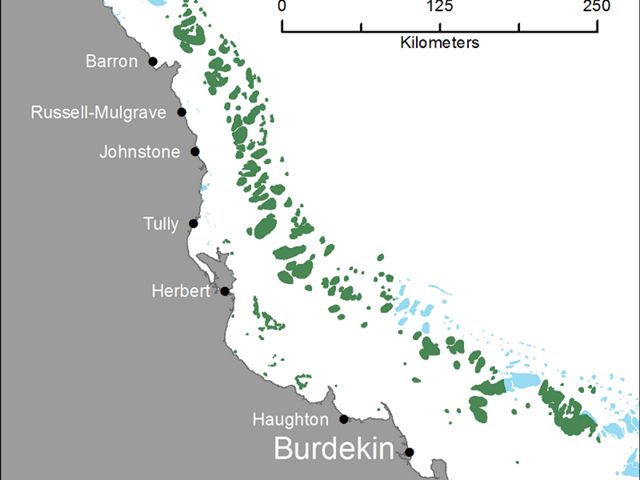Media Contacts
-
Tony Jupp
Associate Director of Communications
The Nature Conservancy Australia
Email: tjupp@tnc.org
New research led by scientists from the University of Queensland and The Nature Conservancy has identified which rivers are most responsible for polluting the Great Barrier Reef. The research also sheds light on the vast distances that pollution travels once discharged from the river mouth. These findings offer a way to prioritise critical land-based actions to protect the Reef.
“Our results indicate that the Burdekin, Fitzroy, Tully and Daintree Rivers posed the greatest nutrient risk (in terms of dissolved inorganic nitrogen) to coral reefs during the three seasons examined”, said Dr Nick Wolff, lead author of the research, from The Nature Conservancy. “We were surprised to discover the extent of pollution from the Burdekin River during 2011 when 275 reefs up to 450 kilometres north of the river mouth were impacted.

We could use this approach to target where the biggest pollution problems are and act on these sooner and more effectively by focusing limited resources on those catchments where action will have the greatest potential benefit for the reef.”
“Understanding the flow and direction of pollutants from each river and their catchments and tracking where these pollutants end up has been a missing piece in the puzzle to protect the reef” said Dr Wolff. “Our research used sophisticated oceanographic models and ‘virtual dyes’ to trace the movement of pollutants in rivers flowing onto the reef to help resolve this puzzle”.
When dissolved inorganic nitrogen enters the ocean from river runoff it stimulates the growth of algae. On the reef, algae can smother corals. In the water, planktonic algae can block sunlight reaching the corals. Increased plankton also promotes the breeding success of the destructive Crown-of-Thorns Starfish. Reducing nutrients flowing via rivers to the reef is critical to help sustain the health of the Great Barrier Reef (GBR).
The study also included scientists from the Australian Institute of Marine Science, James Cook University and the UK Centre for Environment, Fisheries and Aquaculture Science. They used a GBR-wide hydrodynamic model to learn how nitrogen moved through 16 individual river plumes during three wet seasons up to 2013. They then used direct observations to calibrate tracer values, allowing them to estimate the contribution of each river to the GBR’s overall exposure during each season.
Read the research paper here.
The Nature Conservancy is a global conservation organisation dedicated to conserving the lands and waters on which all life depends. Guided by science, we focus on getting things done efficiently and with the greatest positive impact for conservation. We’re a trusted organisation working in more than 70 countries and territories around the world on innovative solutions to our world’s toughest challenges so that nature and people can thrive together. To learn more about The Nature Conservancy in Australia, follow us on Facebook.